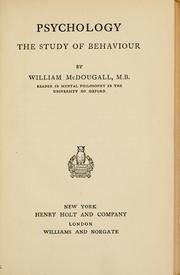
Implicit outcomes expectancies shape memory process: Electrophysiological evidence
Sign Up to like & getrecommendations! Published in 2020 at "Biological Psychology"
DOI: 10.1016/j.biopsycho.2020.107987
Abstract: The simple manipulation of pairing specific outcomes with the sample stimuli strongly affects discriminative learning and memory processes. This procedure has been named the Differential Outcomes Procedure (DOP) and is usually compared to a control… read more here.
Keywords: electrophysiological evidence; outcomes expectancies; evidence implicit; memory ... See more keywords

Electrophysiological evidence of the Riche–Cannieu anastomosis in the hand and its diagnostic implications; 2 case reports
Sign Up to like & getrecommendations! Published in 2017 at "Clinical Neurophysiology Practice"
DOI: 10.1016/j.cnp.2016.11.001
Abstract: Highlights • Riche–Cannieu anastomosis (RCA) in patients with CTS needs to be considered.• Misdiagnosis as severe CTS can lead to unnecessary surgical intervention.• Evaluation for CTS should always include an EMG. read more here.
Keywords: cannieu anastomosis; electrophysiological evidence; anastomosis hand; riche cannieu ... See more keywords

Electrophysiological evidence for attentional capture by irrelevant angry facial expressions: Naturalistic faces
Sign Up to like & getrecommendations! Published in 2017 at "Neuroscience Letters"
DOI: 10.1016/j.neulet.2016.11.055
Abstract: Recently, research on lateralized event related potentials (ERPs) in response to irrelevant distractors has revealed that angry but not happy schematic distractors capture spatial attention. Whether this effect occurs in the context of the natural… read more here.
Keywords: electrophysiological evidence; capture irrelevant; face; attentional capture ... See more keywords

Electrophysiological Evidence for Early and Interactive Symbol Access and Rule Processing in Retrieving and Combining Language Constructions
Sign Up to like & getrecommendations! Published in 2017 at "Journal of Cognitive Neuroscience"
DOI: 10.1162/jocn_a_01038
Abstract: The human brain stores an immense repertoire of linguistic symbols (morphemes, words) and combines them into a virtually unlimited set of well-formed strings (phrases, sentences) that serve as efficient communicative tools. Communication is hampered, however,… read more here.
Keywords: processing; electrophysiological evidence; evidence; early interactive ... See more keywords

Electrophysiological Evidence for Top-Down Lexical Influences on Early Speech Perception
Sign Up to like & getrecommendations! Published in 2019 at "Psychological Science"
DOI: 10.1177/0956797619841813
Abstract: An unresolved issue in speech perception concerns whether top-down linguistic information influences perceptual responses. We addressed this issue using the event-related-potential technique in two experiments that measured cross-modal sequential-semantic priming effects on the auditory N1,… read more here.
Keywords: electrophysiological evidence; lexical influences; perception; top lexical ... See more keywords

Mood effects on semantic processes: Behavioural and electrophysiological evidence
Sign Up to like & getrecommendations! Published in 2022 at "Frontiers in Psychology"
DOI: 10.3389/fpsyg.2022.1014706
Abstract: Mood (i.e., our current background affective state) often unobtrusively yet pervasively affects how we think and behave. Typically, theoretical frameworks position it as an embodied source of information (i.e., a biomarker), activating thinking patterns that… read more here.
Keywords: behavioural electrophysiological; mood effects; electrophysiological evidence; language ... See more keywords